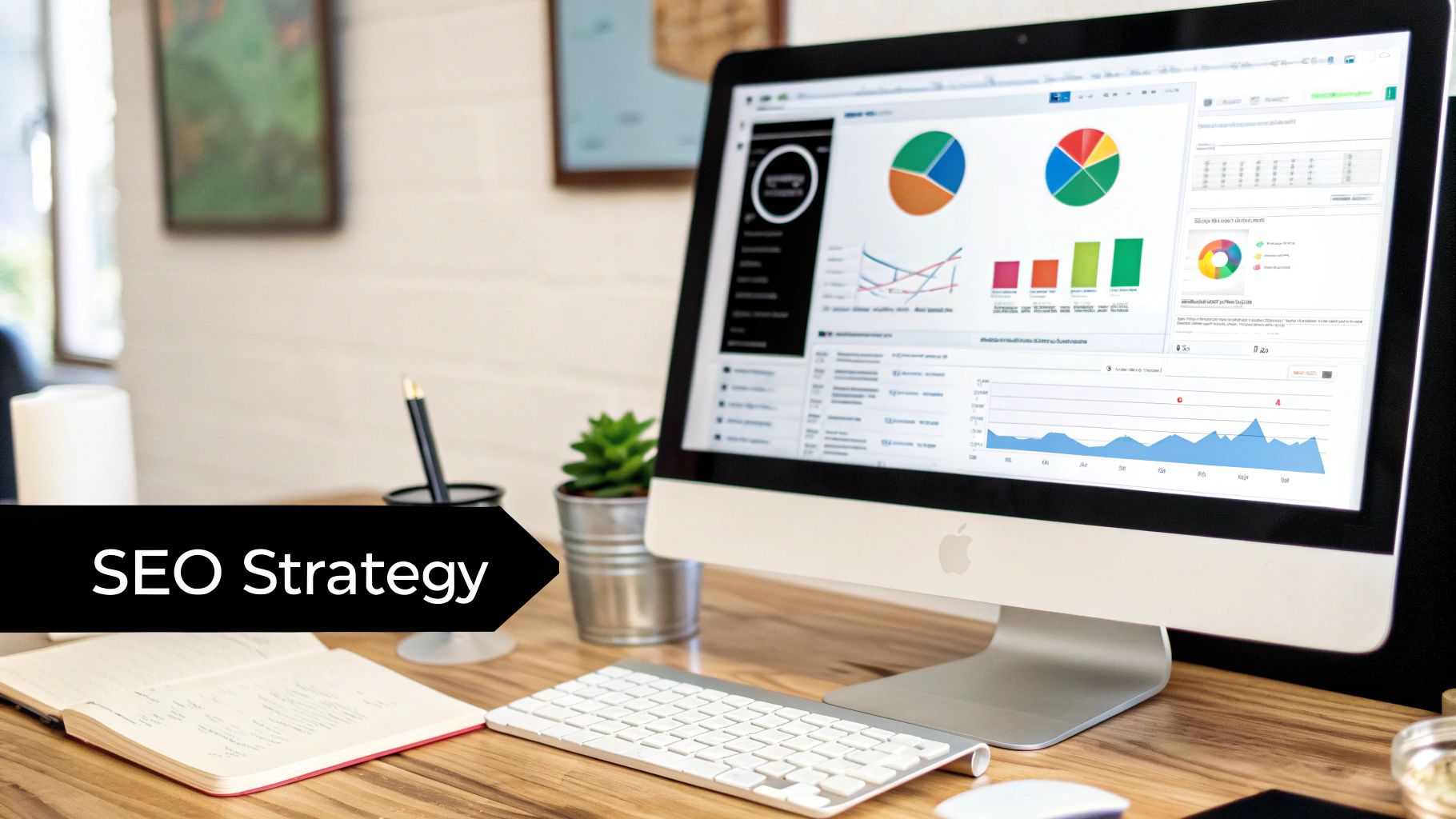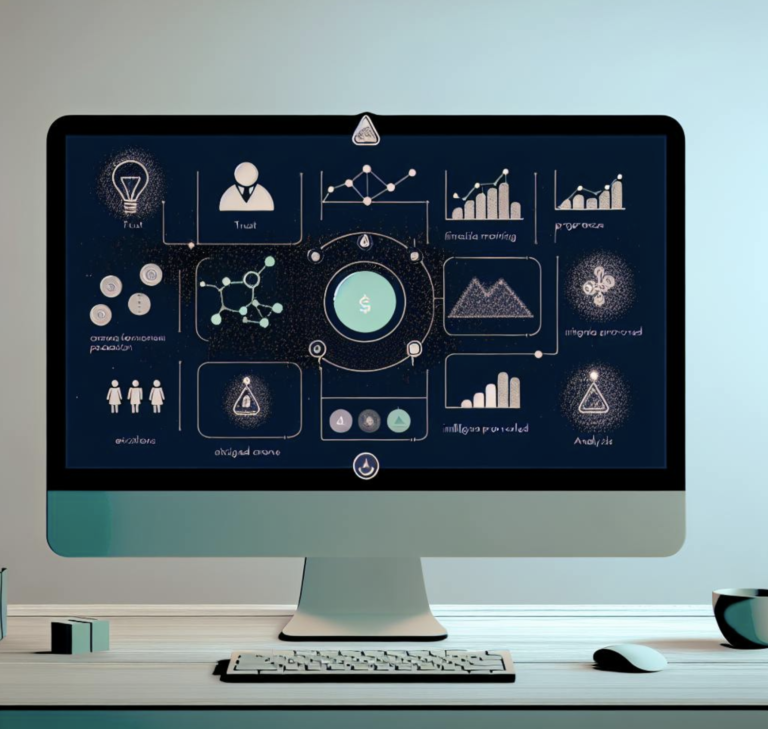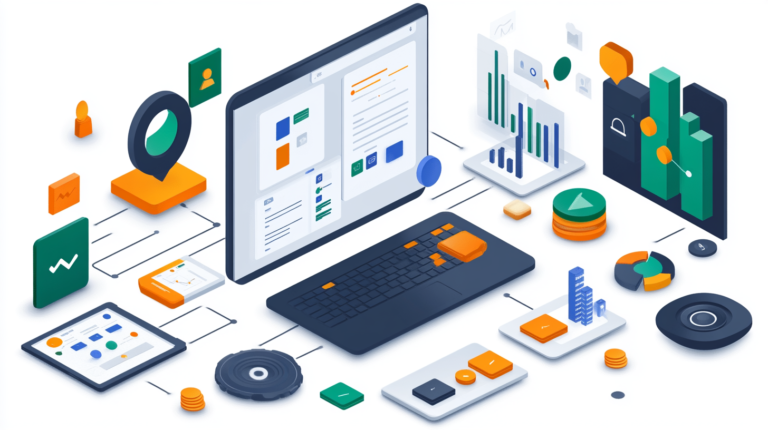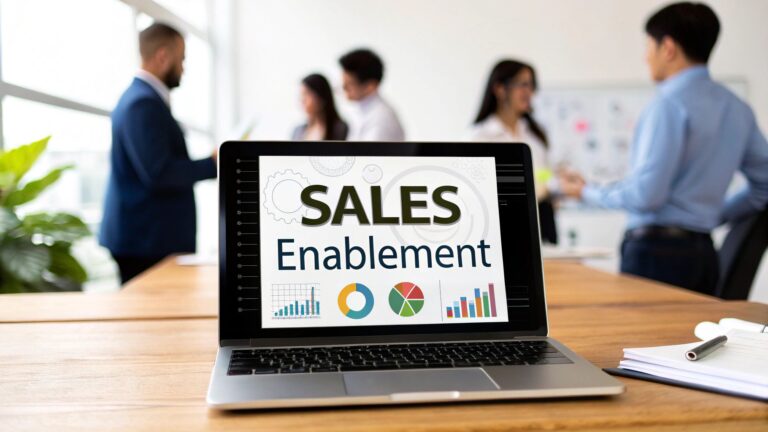9 AI-Powered B2B Growth Strategies for 2025
In the fast-evolving B2B landscape, standing still is falling behind. Traditional growth levers are no longer enough to guarantee success. Today's market leaders are not just adapting; they are actively architecting their future with intelligent automation and data-driven frameworks. The pursuit of sustainable expansion requires a sophisticated blend of tactical execution and strategic foresight, making the right B2B growth strategies more critical than ever.
This article moves beyond generic advice to provide a comprehensive roundup of nine powerful B2B growth strategies, each supercharged by AI and automation. We will dissect each strategy, offering actionable blueprints for implementation, real-world examples from industry titans, and the specific tools you need to build a predictable revenue engine. We're cutting through the noise to deliver a playbook designed for modern challenges, from optimizing sales funnels to building unshakable customer loyalty.
Whether you're aiming to refine your lead generation, optimize sales processes, or maximize customer lifetime value, these strategies provide the roadmaps to not just compete, but dominate your niche. For a comprehensive overview of proven tactics to accelerate your B2B growth and drive conversions, consider exploring these 10 B2B SaaS marketing strategies to win in 2025 to complement the frameworks discussed here. Prepare to explore the essential strategies that will define market leadership in 2025 and beyond.
1. Account-Based Marketing (ABM)
Account-Based Marketing (ABM) is a highly focused B2B growth strategy that flips the traditional marketing funnel on its head. Instead of casting a wide net to capture as many leads as possible, ABM concentrates marketing and sales resources on a select list of high-value target accounts. This approach treats each account as a unique market, enabling deeply personalized campaigns that resonate with the specific needs and pain points of key decision-makers. The core principle is simple: focus on quality over quantity, driving engagement and building relationships with the companies most likely to become your best customers.

This laser-focused methodology is a powerful alternative to broad-based lead generation when dealing with complex sales cycles, high-value deals, or concentrated markets. By aligning sales and marketing efforts from the very beginning, companies can create a cohesive and compelling buying experience that accelerates the sales pipeline and maximizes ROI.
Why ABM is a Powerful Growth Strategy
ABM excels by eliminating wasted resources on prospects who will never convert. Its effectiveness is proven by major B2B players. For instance, Salesforce increased its pipeline by a remarkable 22% by using ABM to target Fortune 500 companies with tailored messaging. Similarly, Microsoft achieved an impressive 97% account engagement rate through highly personalized ABM campaigns, demonstrating the power of a bespoke approach.
How to Implement Account-Based Marketing
To successfully deploy ABM, a structured approach is essential. Follow these actionable steps to integrate this strategy into your B2B growth plans:
- Start Small with a Pilot: Begin with a manageable pilot program targeting 10-20 high-value accounts. This allows you to refine your process, test messaging, and demonstrate early wins before scaling up.
- Align Sales and Marketing: True ABM success requires a deep partnership between sales and marketing. Hold regular joint meetings to select target accounts, develop campaign strategies, and review progress. This alignment ensures a consistent experience for the target account.
- Invest in Account Intelligence: Use tools like LinkedIn Sales Navigator, ZoomInfo, or Bombora to gather deep insights into your target accounts. Understand their organizational structure, key stakeholders, recent business triggers, and technology stack.
- Leverage Intent Data: Identify which of your target accounts are actively researching solutions like yours. Intent data signals buying interest, allowing you to prioritize outreach and tailor your messaging to their current needs.
- Create Account-Specific Content: Move beyond generic content. Develop account-specific assets like personalized landing pages, custom-branded reports, or microsites dedicated to solving that account’s unique challenges. This level of personalization shows you've done your homework and are invested in their success.
2. Content Marketing & Thought Leadership
Content Marketing & Thought Leadership is a strategic approach focused on creating and distributing valuable, relevant, and consistent content to attract and engage a clearly defined B2B audience. Instead of directly pitching products or services, this strategy positions a company and its executives as trusted industry experts. The goal is to build an audience, establish credibility, and ultimately drive profitable customer action by becoming the go-to resource for information and solutions.

This inbound methodology is fundamental to modern B2B growth strategies because it draws prospects in by addressing their most pressing questions and challenges. By consistently providing high-quality educational content, you build trust and brand preference long before a prospect is ready to make a purchase, making your company the natural choice when the time comes.
Why Content Marketing is a Powerful Growth Strategy
Content marketing excels at generating organic traffic, nurturing leads, and building long-term brand equity. Its power lies in its scalability and evergreen nature. HubSpot, for example, built its entire inbound marketing empire, now valued at over $15 billion, primarily through its blog, educational guides, and free tools. Similarly, Mailchimp utilized a content-first strategy to grow from a startup to a $12 billion valuation, proving that valuable content can be a company's most effective salesperson.
How to Implement Content Marketing & Thought Leadership
A successful content program requires a disciplined and audience-centric approach. Follow these actionable steps to build your content engine:
- Focus on Solving Customer Problems: Prioritize content that answers your audience's questions and solves their pain points over content that promotes your products. Use customer interviews and sales team feedback to uncover the most relevant topics.
- Establish a Consistent Publishing Schedule: Consistency builds anticipation and keeps your brand top-of-mind. Whether it's one blog post a week or a monthly webinar, create a realistic schedule and stick to it to train your audience to expect and consume your content.
- Repurpose Content for Maximum Reach: Extend the life of your core content pieces by repurposing them into different formats. A single webinar can become multiple blog posts, social media clips, a podcast episode, and an infographic, maximizing your investment.
- Measure Engagement Over Vanity Metrics: Look beyond simple traffic numbers. Track metrics like time on page, scroll depth, newsletter sign-ups, and content-driven lead conversions to understand what truly resonates with your audience.
- Develop Your Unique Angle: The B2B landscape is crowded, so a unique perspective is crucial. To truly stand out, explore proven content marketing best practices for B2B success that resonate with your target audience.
3. Strategic Partnerships & Channel Development
Strategic Partnerships & Channel Development is a B2B growth strategy focused on creating alliances with complementary businesses to expand market reach and accelerate customer acquisition. Instead of relying solely on direct sales and marketing, this approach leverages the established networks, credibility, and resources of partners like resellers, integrators, or technology providers. It’s a powerful method for tapping into new audiences and enhancing your value proposition by integrating with other essential tools in your customers' ecosystem.

This strategy is highly effective for companies looking to scale rapidly without a proportional increase in direct sales and marketing costs. By building a strong partner ecosystem, businesses can create a powerful, indirect growth engine that drives revenue, enhances product value, and builds a defensible competitive moat. It turns collaborators into a dedicated, extended sales force.
Why Strategic Partnerships are a Powerful Growth Strategy
Partnerships allow you to punch above your weight, gaining access to markets and customers you couldn't reach alone. This is one of the most scalable B2B growth strategies available. For example, Salesforce built a monumental ecosystem through its AppExchange, a marketplace of partner applications that extends its platform's functionality. Similarly, Shopify achieved its massive valuation by fostering an extensive network of agency, app, and theme partners who help merchants succeed. These examples prove that a well-executed partner program can become a core pillar of growth.
How to Implement Strategic Partnerships
Building a successful partnership program requires a deliberate and structured approach. Follow these actionable steps to leverage alliances for growth:
- Choose Partners with Complementary Offerings: Identify potential partners whose products or services complement, rather than compete with, your own. The goal is to create a joint value proposition that is stronger than what either company could offer alone.
- Establish Clear Agreements and Metrics: Define the terms of the partnership in a clear agreement. Outline roles, responsibilities, revenue-sharing models, and key performance indicators (KPIs) like partner-sourced leads, joint-win revenue, and integration adoption rates.
- Invest in Partner Enablement: Your partners' success is your success. Provide them with comprehensive training, marketing materials, sales collateral, and dedicated support. A well-enabled partner is motivated and effective.
- Create Co-Marketing Campaigns: Collaborate on joint marketing efforts to build awareness and generate leads. This can include co-hosted webinars, joint case studies, shared content, or integrated digital ad campaigns.
- Regularly Review and Optimize Performance: Schedule regular check-ins with your partners to review progress against goals, address challenges, and identify new opportunities. Continuously refine your program based on performance data and feedback.
4. Sales Development & Lead Generation Optimization
Sales Development & Lead Generation Optimization is a systematic approach to building and refining outbound sales processes to create a predictable and scalable pipeline. This strategy focuses on the specialized role of Sales Development Representatives (SDRs) who are responsible for prospecting, qualifying leads, and setting appointments for account executives. The core principle is to separate the top-of-funnel activities from the closing activities, allowing for greater focus, efficiency, and consistent lead flow.

This methodology, famously popularized by authors like Aaron Ross in Predictable Revenue, provides a blueprint for moving beyond inconsistent, referral-based growth. By optimizing the lead generation and qualification engine, companies can ensure their sales team is always working with well-vetted opportunities, which directly accelerates revenue growth and improves overall sales efficiency.
Why Sales Development is a Powerful Growth Strategy
A dedicated sales development function is a cornerstone of many modern B2B growth strategies because it transforms lead generation from an art into a science. For instance, Outreach.io leveraged its own sales development methodology to scale past $200 million in ARR. Similarly, SalesLoft optimized its sales development processes to grow into a powerhouse with over $100 million in ARR, proving the model's effectiveness at scale. These examples show that a structured outbound process is a repeatable engine for growth.
How to Implement Sales Development & Lead Generation Optimization
Building an effective sales development program requires a clear process and the right tools. Follow these steps to implement this strategy:
- Implement Clear Handoffs: Define the exact criteria for a Sales Qualified Lead (SQL) and create a seamless handoff process between SDRs and Account Executives. This alignment prevents lead leakage and ensures opportunities are acted upon swiftly.
- A/B Test Messaging Constantly: Your outreach will not be perfect from day one. Continuously A/B test email subject lines, call scripts, and value propositions to identify what resonates most with your target audience and improve response rates.
- Invest in Continuous Training: The skills required for effective prospecting are always evolving. Provide ongoing training for your SDR team on topics like objection handling, value proposition articulation, and new prospecting techniques.
- Track Leading Indicators: Don't just focus on the number of meetings booked. Track leading indicators like activity metrics (dials, emails sent), response rates, and conversion rates at each stage to identify bottlenecks and areas for coaching.
- Use Intent Data to Prioritize: Prioritize outbound prospecting efforts by targeting accounts that are actively showing buying signals. Leveraging AI-powered lead generation software can help identify companies already researching solutions like yours.
5. Product-Led Growth (PLG)
Product-Led Growth (PLG) is a business methodology where the product itself acts as the primary driver of customer acquisition, conversion, and expansion. Unlike traditional sales-led models that rely on marketing funnels and sales teams to close deals, PLG empowers users to experience the product's value firsthand, often through a freemium or free trial model. This approach creates a low-friction entry point, allowing the product's utility and user experience to fuel organic, viral growth.
This user-centric model is especially potent for B2B SaaS companies, as it allows products to spread organically within organizations. When an employee discovers a tool that solves a problem, they share it with their team, creating a bottom-up adoption pattern that can quickly lead to company-wide adoption and enterprise-level contracts. PLG effectively turns the product into its own best salesperson.
Why PLG is a Powerful Growth Strategy
PLG creates a highly scalable and cost-effective growth engine by reducing reliance on expensive sales and marketing efforts. Its power is demonstrated by some of the fastest-growing B2B companies. For example, Slack leveraged a viral, freemium model to achieve widespread workplace adoption, culminating in a multi-billion dollar valuation. Similarly, Zoom's frictionless user experience allowed it to grow 30x in just five years, becoming a household name through ease of use and shareability.
How to Implement Product-Led Growth
Integrating PLG requires a deep focus on the user experience and the value delivered by the product. Follow these actionable steps to build a successful PLG strategy:
- Obsess Over Time-to-Value (TTV): Your primary goal is to get users to their "aha moment" as quickly as possible. Streamline the onboarding process, eliminate unnecessary steps, and guide new users to the core features that demonstrate immediate value.
- Build Virality into the Product: Design features that inherently encourage sharing and collaboration. For example, Dropbox scaled to billions of users with its referral program, while Calendly grows every time a user shares their scheduling link.
- Identify Product Qualified Leads (PQLs): A PQL is a user who has experienced the product's value through specific in-app actions, signaling a high likelihood of converting to a paid plan. Track these metrics to focus sales outreach on the most engaged users.
- Use In-App Messaging for Upgrades: Guide users toward paid features with contextual, usage-based prompts. When a user tries to access a premium feature or hits a usage limit on a free plan, trigger an in-app message explaining the benefits of upgrading.
- Implement a Frictionless Self-Serve Model: Allow users to sign up, use the product, and upgrade to a paid plan without ever needing to speak to a salesperson. This autonomy is central to the PLG experience and is a key driver for companies like Calendly, which reached $70M in ARR with a minimal sales team.
6. Customer Success & Expansion Revenue
Customer Success & Expansion Revenue is a proactive B2B growth strategy centered on ensuring customers achieve their desired outcomes while using your product or service. Rather than viewing the sale as the finish line, this approach treats it as the starting point of a long-term partnership. The primary goals are to minimize customer churn, maximize customer lifetime value (CLV), and systematically generate expansion revenue through upsells, cross-sells, and renewals. This shifts focus from acquisition to retention and growth within the existing customer base.
This methodology is essential for any subscription-based or recurring revenue business, particularly in SaaS. By deeply investing in your customers' success, you transform them from simple users into advocates and a reliable source of new revenue. This creates a powerful, capital-efficient growth engine fueled by the very people you're serving.
Why Customer Success is a Powerful Growth Strategy
Focusing on customer success is one of the most sustainable B2B growth strategies because acquiring a new customer can be five to 25 times more expensive than retaining an existing one. Gainsight, a leader in the customer success space, practices what it preaches, consistently achieving over 120% net revenue retention by focusing on customer outcomes. Similarly, HubSpot maintains a net revenue retention rate over 100%, meaning its existing customers generate more revenue year-over-year than is lost to churn, proving that true growth lies in expansion.
How to Implement Customer Success & Expansion
A structured customer success program is vital for turning customer satisfaction into revenue. Follow these steps to build a robust framework:
- Define Success Metrics with Customers: During onboarding, work with each customer to define what success looks like for them. Establish clear, measurable Key Performance Indicators (KPIs) and desired outcomes to align your efforts with their goals from day one.
- Implement Early Warning Systems: Use customer health scoring within a platform like ChurnZero or Totango to identify at-risk accounts. Monitor product usage, support tickets, and engagement levels to create automated alerts for your success team, enabling proactive intervention before churn becomes a risk.
- Create Regular Touchpoints and Reviews: Establish a cadence for regular check-ins and formal Quarterly Business Reviews (QBRs). Use these meetings to review progress against goals, demonstrate value, and uncover new challenges your product can solve.
- Use Customer Data for Expansion: Analyze product usage data to identify customers who are hitting usage limits or not utilizing premium features. This data provides the perfect, non-intrusive opening for a conversation about upgrading or cross-selling.
- Build a Customer Advocacy Program: Identify your happiest and most successful customers and invite them into an advocacy program. Nurture these relationships to generate case studies, testimonials, and high-quality referrals, turning success into a lead generation channel.
7. Digital Marketing & Marketing Automation
Digital Marketing & Marketing Automation is a powerful B2B growth strategy that leverages technology to streamline, automate, and measure marketing tasks and workflows. Instead of manually managing every email, social media post, and lead nurturing step, this approach uses sophisticated platforms to execute these actions at scale. It allows companies to deliver personalized experiences to prospects based on their behavior, effectively guiding them through the buyer's journey from initial awareness to final purchase. The goal is to build a scalable, repeatable system for lead generation and conversion.
This technology-driven methodology is essential for companies looking to grow efficiently. By automating repetitive tasks, marketing teams can focus on high-impact strategic activities like content creation, campaign analysis, and market research. Integrating automation with a robust digital marketing plan creates a cohesive ecosystem that nurtures leads 24/7, ensuring no opportunity is missed and maximizing marketing ROI.
Why Marketing Automation is a Powerful Growth Strategy
Marketing automation drives growth by enabling personalization at a scale that is humanly impossible. Its value is demonstrated by the very companies that pioneered the space. Marketo (now part of Adobe) built a $1.8 billion company selling these solutions, while Pardot (now Salesforce Account Engagement) helps B2B companies achieve remarkable results. Similarly, HubSpot's marketing automation platform serves as the growth engine for over 100,000 customers worldwide, proving its effectiveness as a core component of modern B2B growth strategies.
How to Implement Digital Marketing & Marketing Automation
Deploying marketing automation requires a strategic and data-driven approach. Follow these actionable steps to integrate this powerful strategy:
- Start with Simple Workflows: Begin by automating straightforward processes like a welcome email series for new subscribers or a lead nurturing sequence for webinar registrants. Master these simple workflows before tackling more complex, multi-branch campaigns. You can find out more about building automated email marketing campaigns on makeautomation.co.
- Ensure Data Quality & Lead Scoring: Your automation is only as good as your data. Regularly clean your contact lists and implement a lead scoring system that ranks prospects based on demographic, firmographic, and behavioral data. This ensures sales receives only qualified, sales-ready leads.
- Focus on Behavioral Triggers: Move beyond basic time-based campaigns. Use behavioral triggers, such as a prospect visiting your pricing page or downloading a case study, to launch highly relevant and timely automated communications. This hyper-personalization significantly boosts engagement.
- Integrate Automation with Your CRM: Connect your marketing automation platform with your CRM (e.g., Salesforce, HubSpot). This creates a seamless data flow between marketing and sales, providing a unified view of every lead and customer interaction for a smooth handoff.
- Test and Optimize Everything: Continuously A/B test your email subject lines, landing page copy, calls-to-action, and workflow timing. Use the platform's analytics to identify what works best and refine your campaigns to constantly improve performance.
8. Inbound Marketing & SEO Strategy
Inbound Marketing & SEO Strategy is a powerful methodology that focuses on attracting customers through relevant and helpful content, pulling prospects toward your company naturally. Instead of interrupting potential buyers with unwanted messages, this approach uses search engine optimization (SEO), valuable content, and a seamless user experience to address their needs and solve their problems. The core principle is to be the best answer whenever your ideal customer asks a question, establishing trust and authority long before they are ready to buy.
This customer-centric approach is one of the most scalable and cost-effective B2B growth strategies for building a predictable pipeline. By creating a library of high-quality assets that rank on search engines, you create a long-term lead generation engine that works around the clock, drawing in qualified traffic and converting visitors into leads.
Why Inbound & SEO is a Powerful Growth Strategy
Inbound marketing excels at building a sustainable, long-term competitive advantage that is difficult for others to replicate. Its success is demonstrated by industry titans. For example, HubSpot built its entire multi-billion dollar empire on inbound principles, using its blog and educational resources to attract millions of users. Similarly, SEO tool Ahrefs dominates its market by producing comprehensive educational content and guides that rank for thousands of industry keywords, directly attracting its ideal customer base.
How to Implement an Inbound Marketing & SEO Strategy
A successful inbound strategy requires a systematic and data-driven approach. Follow these actionable steps to integrate this strategy into your B2B growth plans:
- Conduct Thorough Keyword Research: Go beyond simple keywords. Focus on long-tail keywords and questions that reveal buyer intent at different stages of their journey. Use tools like Ahrefs or Semrush to identify opportunities with high business potential.
- Create Topic Clusters: Organize your content around core business themes, or "pillar pages," linked to more specific "cluster" content. This structure signals your expertise to search engines and helps users find the information they need, boosting your authority and rankings.
- Optimize for Search Intent: Ensure your content format matches what searchers expect. If the top results for a query are "how-to" guides, create a comprehensive guide. If they are listicles, create a listicle. Aligning with search intent is critical for ranking.
- Build High-Quality Backlinks: Earn links from reputable websites through digital PR, guest posting on authoritative blogs, and forming strategic content partnerships. High-quality backlinks are a primary ranking factor and signal trust to Google.
- Analyze and Double-Down: Use tools like Google Analytics and Google Search Console to identify your top-performing content. Analyze why it succeeds and create more content on similar topics or in similar formats to replicate that success and compound your results.
9. Sales Enablement & Revenue Operations
Sales Enablement and Revenue Operations (RevOps) represent a powerful, integrated approach to maximizing a company's revenue-generating potential. Sales enablement focuses on equipping sales teams with the necessary content, tools, and training to sell more effectively. RevOps expands this by aligning the operations of sales, marketing, and customer success into a single, cohesive engine, breaking down silos to optimize the entire customer lifecycle from initial lead to renewal. This holistic strategy ensures all revenue-affecting teams work from the same data, follow unified processes, and share accountability for growth.
This combined discipline is essential for B2B companies seeking predictable, scalable growth. By standardizing processes and leveraging technology, organizations can eliminate friction in the buyer's journey, improve sales team performance, and gain a clear, data-driven view of the entire revenue funnel. It transforms revenue generation from a series of disconnected functions into a finely tuned, strategic operation.
Why Sales Enablement & RevOps are Powerful Growth Strategies
The core power of this strategy lies in its ability to drive efficiency and effectiveness across the entire revenue process. By aligning teams and providing critical resources, companies see significant improvements in key metrics. For example, Highspot's sales enablement platform has been shown to increase win rates by 28% by ensuring reps have instant access to the most effective content. Similarly, Gong's revenue intelligence platform helps improve sales team performance by 15-20% by analyzing sales conversations to uncover winning behaviors.
How to Implement Sales Enablement & RevOps
Deploying a successful Sales Enablement and RevOps function requires a methodical and cross-functional effort. Follow these steps to build a robust revenue engine:
- Document and Standardize the Sales Process: Begin by mapping out your entire sales process from lead qualification to closing. Standardize stages, definitions, and required activities to create a consistent framework that everyone follows.
- Establish Regular Sales Coaching: Implement a structured coaching program using tools and real-life scenarios. Use conversation intelligence to identify winning sales behaviors and areas for individual improvement, creating a culture of continuous development.
- Create Accessible Content Libraries: Build a centralized, easy-to-navigate repository for all sales and marketing content. Use a platform like Seismic or Highspot to organize case studies, pitch decks, and battle cards, ensuring reps can quickly find the right asset for any situation. You can learn more about these sales enablement best practices on makeautomation.co.
- Form a Cross-Functional Revenue Team: Establish regular meetings that include leaders from sales, marketing, and customer success. Use these sessions to review pipeline health, analyze data, and align on strategic priorities to ensure the entire organization is moving in the same direction.
- Invest in a Centralized Tech Stack: Adopt a core set of technologies, such as a CRM and a revenue intelligence platform, to create a single source of truth. A tool like Salesforce Revenue Cloud can help consolidate billing, payments, and subscription management to optimize the entire revenue lifecycle.
9 B2B Growth Strategies Comparison
| Strategy | Implementation Complexity | Resource Requirements | Expected Outcomes | Ideal Use Cases | Key Advantages |
|---|---|---|---|---|---|
| Account-Based Marketing (ABM) | High – requires research & tech | High – specialized teams & tools | Higher conversion rates, stronger relationships | Enterprise firms with high-value, complex sales cycles | Precise targeting, better ROI, sales-marketing alignment |
| Content Marketing & Thought Leadership | Medium – ongoing content creation | Medium – content & SEO skills | Brand authority, qualified leads, organic growth | B2B companies seeking brand leadership & inbound leads | Builds credibility, supports buyer journey |
| Strategic Partnerships & Channel Development | Medium-High – partner management | Medium – partner enablement | Rapid market expansion, reduced acquisition costs | Companies seeking growth via alliances & networks | Market reach, shared risk, enhanced offerings |
| Sales Development & Lead Gen Optimization | High – team setup & CRM tuning | High – SDR teams & sales tools | Predictable pipeline, improved sales efficiency | Organizations focusing on outbound sales scalability | Scalable pipeline, clear ROI, better lead quality |
| Product-Led Growth (PLG) | High – product investment needed | High – product & analytics focus | Faster adoption, scalable growth, high user retention | SaaS and tech products with self-service models | Lower CAC, viral growth, quick user value |
| Customer Success & Expansion Revenue | Medium-High – dedicated teams | Medium-High – success personnel | Increased CLV, retention, predictable expansion revenue | Subscription & SaaS businesses focusing on retention | Higher retention, customer advocacy, expansion upsells |
| Digital Marketing & Marketing Automation | High – complex tech integration | High – marketing automation tools | Improved nurturing, scalable marketing, better ROI | B2B firms leveraging multi-channel digital campaigns | Enhanced personalization, automation efficiency |
| Inbound Marketing & SEO Strategy | Medium – content & SEO intensive | Medium – SEO expertise & content | Organic traffic growth, quality leads, brand authority | Businesses focusing on organic, content-driven growth | Lower CPL, compounding returns, industry authority |
| Sales Enablement & Revenue Operations | High – org change & tech setup | High – technology & training | Improved sales performance, pipeline visibility | Companies aligning sales, marketing & success teams | Data-driven decisions, standardized processes |
From Strategy to Scalable Systems: Your Next Move
Navigating the landscape of B2B growth is no longer about choosing a single path to victory. As we've explored, the most resilient and successful companies are not just implementing one or two of these strategies; they are weaving them together into a cohesive, technology-powered revenue engine. The era of siloed departments and disjointed tactics is over. The future belongs to businesses that can synchronize Account-Based Marketing with a robust Content Marketing program, amplify their reach through Strategic Partnerships, and fuel it all with optimized Sales Development.
The common thread connecting these powerful B2B growth strategies is the intelligent and intentional application of AI and automation. From the hyper-personalization required for effective ABM to the data-driven insights that power a successful Product-Led Growth model, technology is the catalyst that transforms a good strategy into a great, scalable system. It's the difference between manually chasing leads and building an automated inbound machine that works for you around the clock.
Bridging the Gap Between Knowing and Doing
Understanding these frameworks is the essential first step, but the true challenge lies in implementation. It's one thing to recognize the value of Sales Enablement or Customer Success, and another entirely to build the automated workflows, integrated toolchains, and standardized operating procedures that bring them to life. This is where many businesses falter, getting bogged down in manual processes that consume valuable time and resources, ultimately hindering the very growth they seek.
The goal is to elevate your operations from a collection of reactive tasks to a proactive, predictable growth model. This means asking critical questions:
- How can we automate lead scoring and routing to accelerate our sales cycle?
- What AI tools can help us analyze customer feedback to proactively reduce churn?
- How can we build a content distribution system that amplifies our thought leadership with minimal manual effort?
Answering these questions and building the corresponding systems is the linchpin of modern B2B success.
Your Blueprint for Actionable Growth
To truly operationalize these B2B growth strategies, you must shift your mindset from "doing tasks" to "building systems." Your next move isn't just to try another tactic; it's to build the infrastructure that makes all your tactics more effective and efficient.
Here is your actionable blueprint to get started:
- Audit Your Current Processes: Identify the most time-consuming, repetitive, and manual tasks within your sales, marketing, and customer success functions. Where are the bottlenecks? Where are the data silos?
- Prioritize for Impact: You cannot automate everything at once. Start with the process that, if automated, would have the most significant positive impact on revenue or customer retention. This could be lead nurturing, customer onboarding, or content reporting.
- Design the Automated Workflow: Map out the ideal, automated version of your chosen process. Define the triggers, actions, and data handoffs between your tools (e.g., your CRM, marketing automation platform, and sales enablement software).
- Implement and Iterate: Build the automation, test it rigorously, and train your team on the new, streamlined process. Remember, this is not a "set it and forget it" solution. Continuously monitor performance and gather feedback for ongoing optimization.
Mastering this system-building approach is what separates high-growth companies from the rest. It allows you to reclaim thousands of hours, reduce human error, gain deeper insights from your data, and ultimately create a more resilient and scalable foundation for your business. It’s how you ensure that your strategies for growth are not just ideas on a page, but a living, breathing part of your company’s operational DNA.
Ready to transform these B2B growth strategies from theory into a powerful, automated reality? The team at MakeAutomation specializes in designing and implementing the exact custom automation systems and AI-powered workflows your business needs to scale efficiently. Partner with an expert to build your revenue engine and accelerate your journey to the next level.







